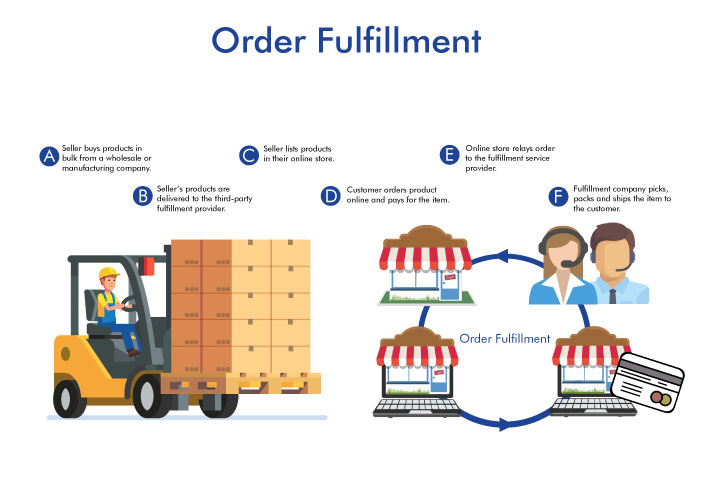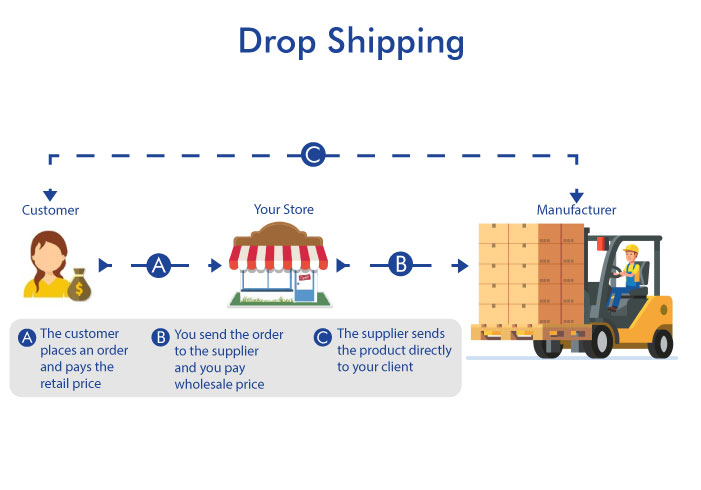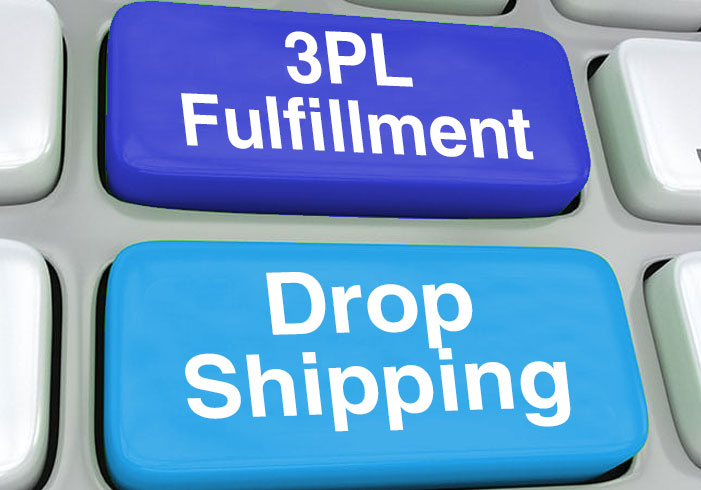When most people hear the term drop shipping, they think that it’s another type of third-party fulfillment service. Now, drop shipping does provide e-commerce businesses the opportunity to allow a third party to ship products to customers but there is an essential difference between the two. For your business to determine which one you should utilize it is critical to understand the good, the bad, and the ugly for all three so that you have a much better understanding and can make an informed decision. One is not necessarily better than the other. They each offer something unique while providing similar services and it is really up to the type of business you have and the size of your wallet as to which one will be the best solution for you. Understand as well that at any point if you decide to change you have the flexibility
Defining third-party fulfillment
Third-party fulfillment is when you outsource your fulfillment options to another company. That company will handle your store merchandise, they will pick up orders and pack them, and they will handle all of the logistics of shipping.
What is most important to understand is that with a third-party fulfillment service, the seller buys their inventory in bulk, and then they contract with a fulfillment warehouse to handle every aspect of fulfilling an order. This is an excellent option for sellers who don’t have warehouses themselves but would still like to keep inventory.
With this type of solution, you purchase, as the seller, your products in bulk from your distributor or your manufacturer. You list all of the products you have to offer on your online store, but before you can list a product for sale, you have to deliver those products to the third party fulfillment company. At that point, when buyers place orders, you contact the third party company, and they process the request, pack up the product, and arrange for delivery to your buyer.
If you have an eCommerce store with enough capital to purchase inventory ahead of time and maintain it, this is the perfect solution. It’s also better for sellers who are confident that they can sell their product quickly and things won’t just sit there. Anyone who wants to outsource their storage and would also benefit from this option.

The fulfillment cycle
With this solution, you buy inventory first and foremost and give it to the company. You have to purchase your inventory wholesale or from a manufacturing company. Then you deliver them to the third-party fulfillment provider. At that point, you can list the products in your online store. Customers visit your store, order a product, and pay for it. When that is done, the information is related to the Fulfillment service provider. The company will pick up the items from the warehouse, pack them, and ship them to your customer.
Defining drop shipping
Drop shipping is slightly different insofar as you as the seller offer products for sale that you don’t purchase ahead of time. You contract with the manufacturer to drop ship orders directly to your customers. With this system as the seller, you don’t have to bear the burden of paying for inventory ahead of time. The trade-off here is that the manufacturer will charge you a higher wholesale price for every item you purchased individually. The reason for this is that they act as the warehouse and they fulfill individual orders instead of shipping to you as the seller in bulk. So, you as the seller don’t have to purchase any product ahead of time, but on your website, it looks like you’re selling your products, products you already have physically. As the seller, you handle marketing and customer service in this arrangement. In exchange, the manufacturer functions as the warehouse, and they handle shipping services.
For dropshipping you place items offered by one or more drop shipping companies on your website for sale. If you have three types of products, you want to contribute, and three different drop shipping companies only provide them you can offer all three and merely arrange contracts with all three companies. Customers will visit your site and place an order. Once they have paid for the product, you forward that order to the manufacturer and the manufacturer processes that order and ships directly to your customer.
This particular option is an excellent arrangement for people who don’t have the capital to purchase inventory or sellers who don’t want to invest in storage and logistics. It is also a beneficial system for any seller that wants to offer a more extensive selection of products through the same website. If, for example, you want to try a new product and see if it sells, you don’t have to justify the cost of purchasing a large amount of inventory with this agreement. Instead, you can offer it as a trial, and if it sells well, then you can change your shipping method if necessary.

The Drop Shipping Cycle
With this system, you add a product to your online store first and foremost. Customers visit your store, and they purchase the product. The customer paid you for the product and the shipping cost. You place the subsequent order with your supplier. Your supplier packages and drop ships the item to your customers.
There are pros and cons to each. The most significant advantage associated with the fulfillment service is the reduced cost for products long-term, but the biggest drawback is the necessity of extra capital to pay for more significant amounts of products upfront which can be particularly risky if you don’t know how well something will sell. By comparison, the biggest pro associated with drop shipping is you don’t have to take on upfront costs, and you don’t have to take on as much risk if you are trying out new products. Similarly, you have the option of selling multiple products that are not offered by the same company, but you also have to worry about added cost and logistics.of letting a contract or an agreement come to an end and then switching to the other shipping method.






4 Comments on “Drop Shipping and Third-Party Fulfillment: Understanding The Difference”
Hi, Ashley. What I see here is a very interesting article on the difference between dropshipping and third-party fulfillment. You have explained the difference between the two in great detail. Even I wasn’t sure that there was a difference between the two but thanks to your article I know what the difference really is.
Thank you, Raj! – we are glad you found our article clarifying and useful.
Hello
we are actually doing dropshipping from multi suppliers/retailers ( especially from Walmart to Amazon) . at present our sales volume is approximately $300k overall and almost 5k units are sold and shipped per month. our issue is as a dropshipping model, whenever a customer gets Walmart packaging which often makes our customer negative and they place negative reviews because they did not expect to ship it from walmart as they purchased from our Amazon store. What we want :
1. pick pack and ship to customer and make sure no order contains Walmart packaging
We will welcome any suggestion to eliminate this packaging issues or any suggestions to make our business smoother. Thank you!
Hello Amjad – Dropshipping is direct from origin to the final consumer, bypassing you, the actual seller of the product. We don’t think that Walmart would offer repacking services for their products, and it seems that is exactly what you need. If you want to change the Walmart packaging then we would recommend you to use a distribution center that would repack the goods into plain boxes. Be advised that there will be a cost associated with this repacking process. Hope this helps.